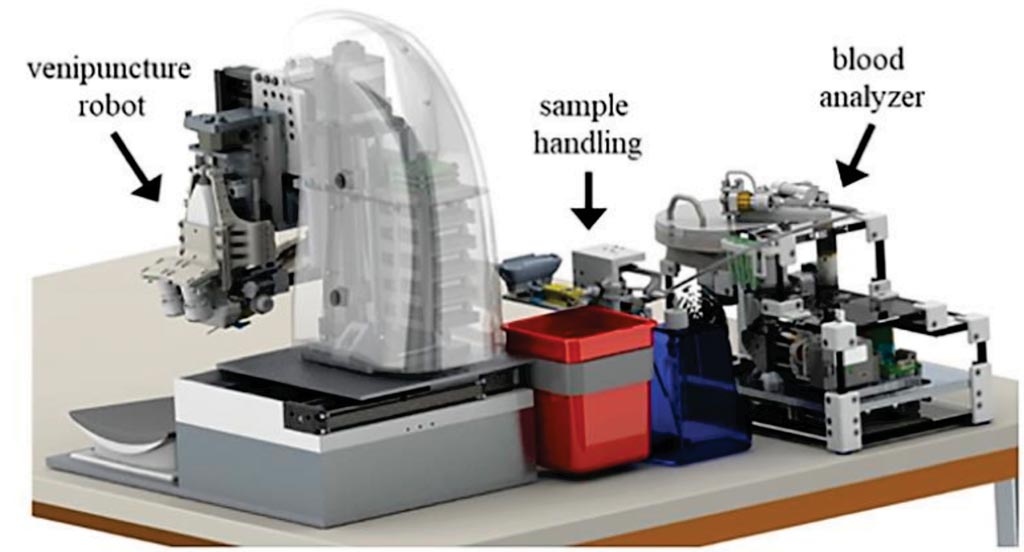Testing Device Integrates Robotic Phlebotomy with Sample Processing
By LabMedica International staff writers
Posted on 20 Jun 2018
Diagnostic blood testing is the most commonly performed clinical procedure in the world and influences the majority of medical decisions made in hospital and laboratory settings. However, manual blood draw success rates are dependent on clinician skill and patient physiology.Posted on 20 Jun 2018
Results from such tests are generated almost exclusively in centralized laboratories from large-volume samples using labor-intensive analytical techniques. An end-to-end blood-testing device has been developed that integrates robotic phlebotomy with downstream sample processing. This platform device performs blood draws and provides diagnostic results in a fully automated fashion at the point-of-care.

Image: Desktop systems have been created that can automatically take patient blood samples (robotic phlebotomy) and process them without any human intervention. Making such technology available for hospitals and clinics may have significant consequences, as blood draws are the most common clinical procedures (Photo courtesy of Rutgers University).
Biomedical engineers at Rutgers University, Piscataway NJ, USA) created a device that includes an image-guided venipuncture robot, to address the challenges of routine venous access, with a centrifuge-based blood analyzer to obtain quantitative measurements of hematology. The team first demonstrated a white blood cell assay on the analyzer, using a blood mimicking fluid spiked with fluorescent microbeads, where the area of the packed bead layer is correlated with the bead concentration. Next the scientists performed studies to evaluate the pumping efficiency of the sample-handling module. Finally, studies were conducted on the integrated device from blood draw to analysis, using blood vessel phantoms to assess the accuracy and repeatability of the resulting white blood cell assay.
Martin Yarmush, MD, PhD, a Distinguished Professor of Biomedical Engineering and the senior author of the study said, “This device represents the holy grail in blood testing technology. Integrating miniaturized robotic and microfluidic systems, this technology combines the breadth and accuracy of traditional laboratory testing with the speed and convenience of point-of-care testing.” The study was published on May 30, 2018, in the journal Technology.
Related Links:
Rutgers University









 Analyzer.jpg)



